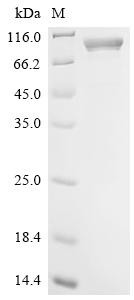Cookie-Einstellungen
Diese Website benutzt Cookies, die für den technischen Betrieb der Website erforderlich sind und stets gesetzt werden. Andere Cookies, die den Komfort bei Benutzung dieser Website erhöhen, der Direktwerbung dienen oder die Interaktion mit anderen Websites und sozialen Netzwerken vereinfachen sollen, werden nur mit Ihrer Zustimmung gesetzt.
Konfiguration
Technisch erforderlich
Diese Cookies sind für die Grundfunktionen des Shops notwendig.
"Alle Cookies ablehnen" Cookie
"Alle Cookies annehmen" Cookie
Ausgewählter Shop
CSRF-Token
Cookie-Einstellungen
FACT-Finder Tracking
Individuelle Preise
Kundenspezifisches Caching
Session
Währungswechsel
Komfortfunktionen
Diese Cookies werden genutzt um das Einkaufserlebnis noch ansprechender zu gestalten, beispielsweise für die Wiedererkennung des Besuchers.
Facebook-Seite in der rechten Blog - Sidebar anzeigen
Merkzettel
Statistik & Tracking
Endgeräteerkennung
Kauf- und Surfverhalten mit Google Tag Manager
Partnerprogramm

| Artikelnummer | Größe | Datenblatt | Manual | SDB | Lieferzeit | Menge | Preis |
|---|---|---|---|---|---|---|---|
| CSB-EP360953BGY-B.20 | 20 µg | - |
10 - 14 Werktage* |
439,00 €
|
|||
| CSB-EP360953BGY-B.1 | 1 mg | - |
10 - 14 Werktage* |
2.356,00 €
|
Bei Fragen nutzen Sie gerne unser Kontaktformular.
Bestellen Sie auch per E-Mail: info@biomol.com
Größere Menge gewünscht? Bulk-Anfrage
Bestellen Sie auch per E-Mail: info@biomol.com
Größere Menge gewünscht? Bulk-Anfrage
Organism: BK polyomavirus (BKPyV) (Human polyomavirus 1). Source: E.coli. Expression Region:... mehr
Produktinformationen "Major capsid protein VP1, Biotinylated, BK polyomavirus, recombinant"
Organism: BK polyomavirus (BKPyV) (Human polyomavirus 1). Source: E.coli. Expression Region: 1-362aa. Protein Length: Full Length. Tag Info: N-terminal MBP-tagged and C-terminal 6xHis-Avi-tagged. Target Protein Sequence: MAPTKRKGEC PGAAPKKPKE PVQVPKLLIK GGVEVLEVKT GVDAITEVEC FLNPEMGDPD ENLRGFSLKL SAENDFSSDS PERKMLPCYS TARIPLPNLN EDLTCGNLLM WEAVTVQTEV IGITSMLNLH AGSQKVHEHG GGKPIQGSNF HFFAVGGEPL EMQGVLMNYR SKYPDGTITP KNPTAQSQVM NTDHKAYLDK NNAYPVECWV PDPSRNENAR YFGTFTGGEN VPPVLHVTNT ATTVLLDEQG VGPLCKADSL YVSAADICGL FTNSSGTQQW RGLARYFKIR LRKRSVKNPY PISFLLSDLI NRRTQRVDGQ PMYGMESQVE EVRVFDGTER LPGDPDMIRY IDKQGQLQTK ML. Purity: Greater than 85% as determined by SDS-PAGE. Endotoxin: n/a. Biological Activity: n/a. Form: Liquid or Lyophilized powder. Buffer: If the delivery form is liquid, the default storage buffer is Tris/PBS-based buffer, 5%-50% glycerol. If the delivery form is lyophilized powder, the buffer before lyophilization is Tris/PBS-based buffer, 6% Trehalose, pH 8.0. Reconstitution: We recommend that this vial be briefly centrifuged prior to opening to bring the contents to the bottom. Please reconstitute protein in deionized sterile water to a concentration of 0.1-1.0 mg/mL.We recommend to add 5-50% of glycerol (final concentration) and aliquot for long-term storage at -20 °C/-80 °C. Our default final concentration of glycerol is 50%. Customers could use it as reference. Storage: The shelf life is related to many factors, storage state, buffer ingredients, storage temperature and the stability of the protein itself. Generally, the shelf life of liquid form is 6 months at -20 °C/-80 °C. The shelf life of lyophilized form is 12 months at -20 °C/-80 °C. Notes: Repeated freezing and thawing is not recommended. Store working aliquots at 4 °C for up to one week. Relevance: Forms an icosahedral capsid with a T=7 symmetry and a 50 nm diameter. The capsid is composed of 72 pentamers linked to each other by disulfide bonds and associated with VP2 or VP3 proteins. Interacts with gangliosides GT1b and GD1b containing terminal alpha(2-8)-linked sialic acids on the cell surface to provide virion attachment to target cell. This attachment induces virion internalization predominantly through caveolin-mediated endocytosis and traffics to the endoplasmic reticulum. Inside the endoplasmic reticulum, the protein folding machinery isomerizes VP1 interpentamer disulfide bonds, thereby triggering initial uncoating. Next, the virion uses the endoplasmic reticulum-associated degradation machinery to probably translocate in the cytosol before reaching the nucleus. Nuclear entry of the viral DNA involves the selective exposure and importin recognition of VP2/Vp3 nuclear localization signal. In late phase of infection, neo-synthesized VP1 encapsulates replicated genomic DNA in the nucleus, and participates in rearranging nucleosomes around the viral DNA. Reference: n/a. Function: nan
| Schlagworte: | Major capsid protein VP1, Major structural protein VP1, Recombinant BK polyomavirus Major capsid protein VP1, Biotinylated |
| Hersteller: | Cusabio |
| Hersteller-Nr: | EP360953BGY-B |
Eigenschaften
| Anwendung: | Activity not tested |
| Konjugat: | Biotin |
| Wirt: | E.coli |
| Spezies-Reaktivität: | BK polyomavirus (BKPyV) |
| MW: | 87.9 kD |
| Reinheit: | >85% (SDS-PAGE) |
Datenbank Information
| UniProt ID : | P03088 | Passende Produkte |
| Gene ID : | GeneID 29031008 | Passende Produkte |
Handhabung & Sicherheit
| Lagerung: | -20°C |
| Versand: | +4°C (International: +4°C) |
Achtung
Nur für Forschungszwecke und Laboruntersuchungen: Nicht für die Anwendung im oder am Menschen!
Nur für Forschungszwecke und Laboruntersuchungen: Nicht für die Anwendung im oder am Menschen!
Hier kriegen Sie ein Zertifikat
Loggen Sie sich ein oder registrieren Sie sich, um Analysenzertifikate anzufordern.
Bewertungen lesen, schreiben und diskutieren... mehr
Kundenbewertungen für "Major capsid protein VP1, Biotinylated, BK polyomavirus, recombinant"
Bewertung schreiben
Loggen Sie sich ein oder registrieren Sie sich, um eine Produktbewertung abzugeben.
Zuletzt angesehen

